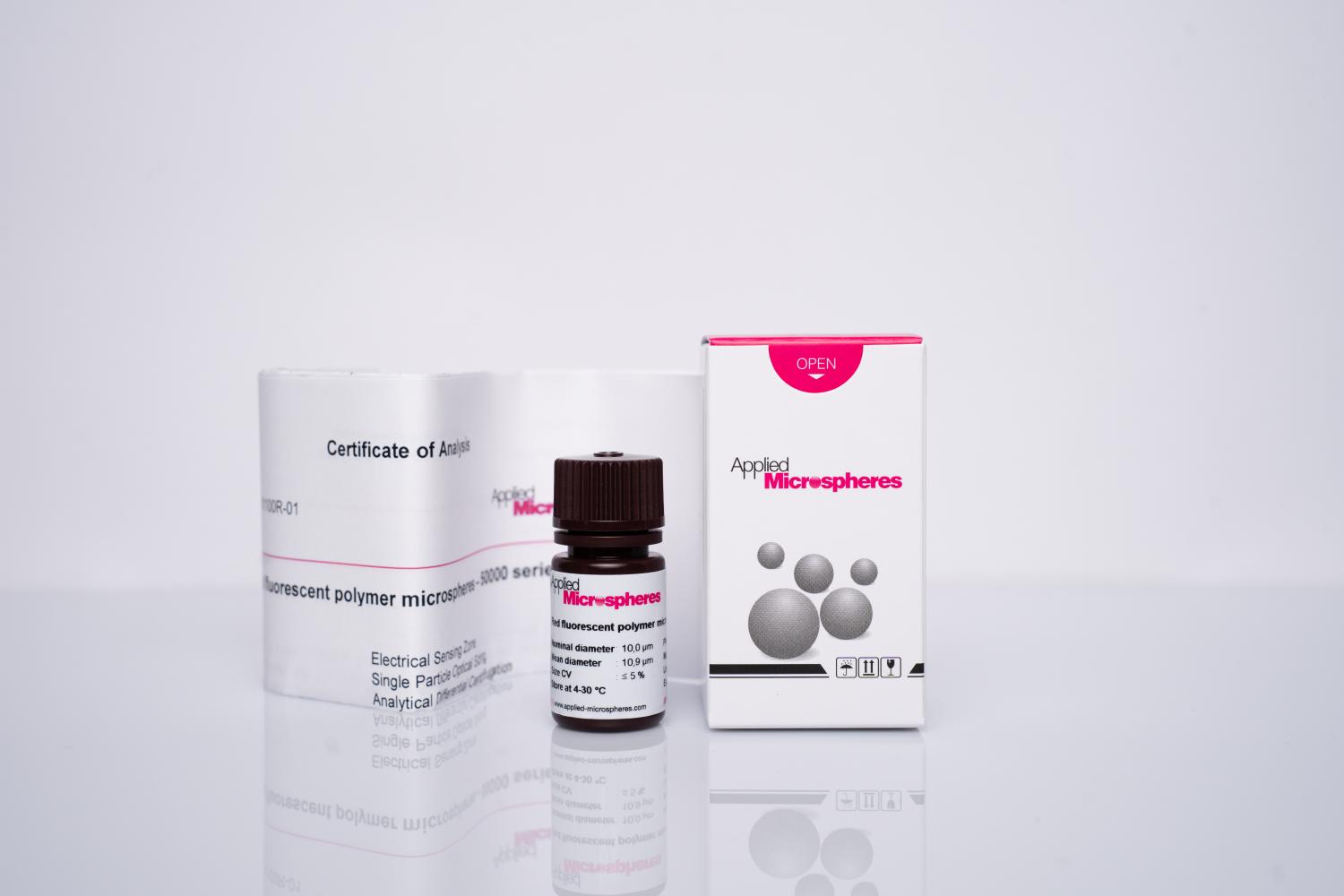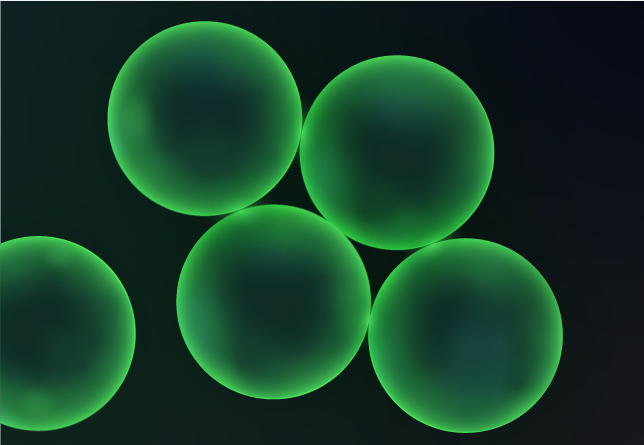Fluorescent Polymer Microspheres
Fluorescent microspheres emit bright and distinctive colors when illuminated by the light of wavelengths shorter than the emission wavelength. This property improves their contrast and visibility relative to background materials. Besides the features of conventional microspheres, the fluorescent products offer improved sensitivity and detectability for analytical methods, yielding very low detection limits for both particle diameters and concentrations.
This product line was developed for general laboratory use. Applied Microspheres can offer many batches of particles with a wide variety of diameters, that can be custom dyed with different fluorescent colours and intensity levels as required. The dyes are incorporated during the polymerisation process, which prevents dye leakage. Applied Microspheres’ unique technology ensures exceptionally small fluorescence C.V.’s. Dispersion in both aqueous media or air are possible without degradation of their fluorescent properties. They are available as aqueous suspensions or as dry powder. The aqueous medium for the suspensions is specially formulated to prevent the formation of agglomerates and for long-term stability. They can be stored at room temperature.
The fluorescent microspheres can be detected with a flow cytometer, epifluorescence microscope, confocal microscope, fluorescence spectrophotometer, amongst others. They can also be identified using a mineral light or black light and can be observed directly in the matrix or media being tested, or they can be collected on membrane filters for examination using the fluorescence microscope. If required, our scientists can modify the polymer microspheres matrix to tune stability in certain solvents. Such particles can be used to study kinetic processes. Targeted colloidal and spectral adjustments of the fluorescent microspheres can mimic complex biological components, such as bacteria, for analytical purpose.
Typical applications include:
- Flow cytometry instrument calibration and set-up
- Fluorescence microscopy
- Fluorescent instrument monitoring
- Confocal microscopy reference particles
- Filtration media and systems testing
- Vial and container cleaning studies
- Flow tracing and fluid mechanics
- Centrifugation and sedimentation studies

Excitation wavelength ranging from 380 – 450 nm.
Emission wavelength ranging from 440 – 520 nm.
| Part No. | Nominal Diam. | Quantity | Solids | Price |
|---|---|---|---|---|
| 50100B-03 | 0,1 µm | 3 ml | 1 % suspension | |
| 50100B-50 | 50 ml | |||
| 50500B-03 | 0,5 µm | 3 ml | ||
| 50500B-50 | 50 ml | |||
| 51010B-03 | 1 µm | 3 ml | ||
| 51010B-50 | 50 ml | |||
| 51050B-01 | 5 µm | 1 g | powder | |
| 51050B-03 | 3 ml | 1 % suspension | ||
| 51050B-50 | 50 ml | |||
| 51100B-01 | 10 µm | 1 g | powder | |
| 51100B-03 | 3 ml | 1 % suspension | ||
| 51100B-50 | 50 ml | |||
| 51150B-01 | 15 µm | 1 g | powder | |
| 51150B-03 | 3 ml | 1 % suspension | ||
| 51150B-50 | 50 ml | |||
| 51200B-01 | 20 µm | 1 g | powder | |
| 51200B-03 | 3 ml | 1 % suspension | ||
| 51200B-50 | 50 ml |


